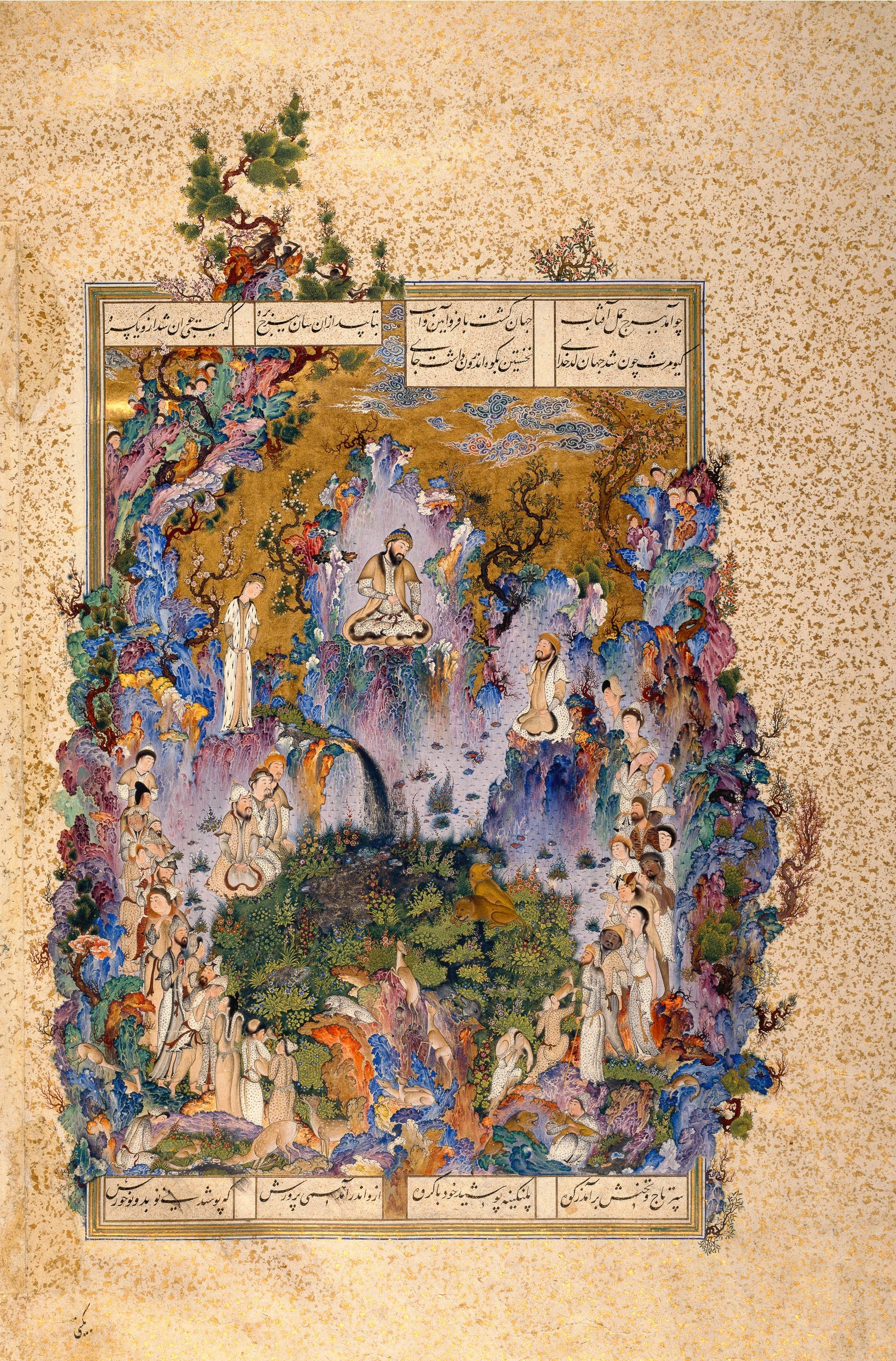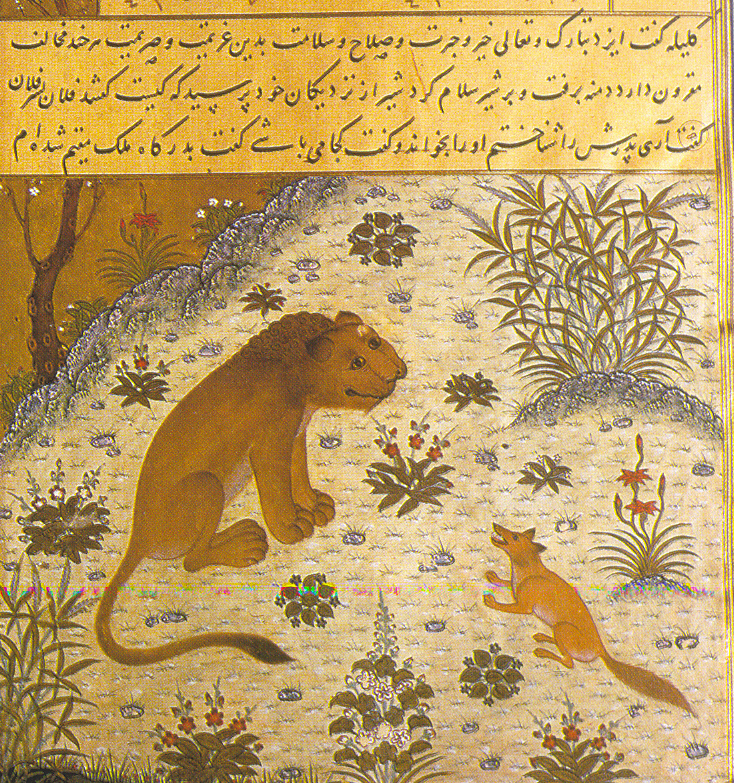|
Shahnameh
The ''Shahnameh'' (, ), also transliterated ''Shahnama'', is a long epic poem written by the Persian literature, Persian poet Ferdowsi between and 1010 CE and is the national epic of Greater Iran. Consisting of some 50,000 distichs or couplets (two-line verses), the ''Shahnameh'' is one of the world's longest epic poems, and the longest epic poem created by a single author. It tells mainly the Persian mythology, mythical and to some extent the historical past of the Persian Empire from the creation of the world until the Muslim conquest of Persia, Muslim conquest in the seventh century. Iran, Azerbaijan, Afghanistan, Tajikistan and the greater Greater Iran, region influenced by Persian culture such as Armenia, Dagestan, Georgia (country), Georgia, Turkey, Turkmenistan and Uzbekistan celebrate this national epic. The work is of central importance in Persian culture and Persian language. It is regarded as a literary masterpiece, and definitive of the ethno-national cultural ide ... [...More Info...] [...Related Items...] OR: [Wikipedia] [Google] [Baidu] |
Ferdowsi
Abu'l-Qâsem Ferdowsi Tusi (also Firdawsi, ; 940 – 1019/1025) was a Persians, Persian poet and the author of ''Shahnameh'' ("Book of Kings"), which is one of the world's longest epic poetry, epic poems created by a single poet, and the greatest epic of Persian-speaking people, Persian-speaking countries. Ferdowsi is celebrated as one of the most influential figures of Persian literature and one of the greatest in the history of literature. Name Except for his ''kunya (Arabic), kunya'' ( – , meaning 'father of Qasem') and his Takhallus, pen name ( – ''Ferdowsī'', meaning 'Paradise, paradisic'), nothing is known with any certainty about his full name. According to Djalal Khaleghi-Motlagh, the information given by the 13th-century author Bundari about Ferdowsi's name should be taken as the most reliable. Bundari calls the poet al-Amir al-Hakim Abu'l-Qasem Mansur ibn al-Hasan al-Ferdowsi al-Tusi. From an early period on, he has been referred to by different additional na ... [...More Info...] [...Related Items...] OR: [Wikipedia] [Google] [Baidu] |
Persian Mythology
Iranian mythology, or Persian mythology in western term (), is the body of the myths originally told by ancient Persians and other Iranian peoples and a genre of ancient Persian folklore. These stories concern the origin and nature of the world, the lives and activities of deities, heroes, and mythological creatures, and the origins and significance of the ancient Persians' own cult and ritual practices. Modern scholars study the myths to shed light on the religious and political institutions of not only Iran but of the Greater Iran, Persosphere, which includes regions of West Asia, Central Asia, South Asia, and Transcaucasia where the culture of Iran has had significant influence. Historically, these were regions long ruled by dynasties of various Iranian empires, that incorporated considerable aspects of Persian culture through extensive contact with them, or where sufficient Iranian peoples settled to still maintain communities who patronize their respective cultures. It roug ... [...More Info...] [...Related Items...] OR: [Wikipedia] [Google] [Baidu] |
Sultan Mohammed
Sultan Mohammad () was an Iranian painter at the Safavid court in Tabriz under Shah Ismail I () and Shah Tahmasp I (). He served as the director of Shah Ismail's artists’ workshop and as the first project director of the ''Shahnameh'' of Shah Tahmasp. He gave painting lessons to Tahmasp when he was the crown prince. Sultan Mohammad’s style was initially based in the Turkman courtly idiom. Sheila R. Canby writes that around 1515, he was perfecting scenes of “man and animal inhabiting a natural world of roaring winds, lush and frenzied vegetation and rocks resembling grotesque faces”, of which his painting “Rustam Sleeping while Rakhsh Fights a Lion” from an unfinished ''Shahnameh'' is an example. In the 1520s however, Sultan Mohammad was influenced by the more sedate and subtle late Timurid mode practiced at Herat; his compositions became more orderly and architectonic. Sultan Mohammad’s painting “The Court of Gayumars” is widely considered the “crowning ac ... [...More Info...] [...Related Items...] OR: [Wikipedia] [Google] [Baidu] |
Shahnameh Of Shah Tahmasp
The ''Shahnameh'' of Shah Tahmasp () or Houghton ''Shahnameh'' is one of the most famous illustrated manuscripts of the ''Shahnameh'', the national epic of Greater Iran, and a high point in the art of the Persian miniature. It is probably the most fully illustrated manuscript of the text ever produced. When created, the manuscript contained 759 pages, 258 of which were miniatures. These miniatures were hand-painted by the artists of the imperial workshop in Tabriz under Shah Ismail I and Shah Tahmasp I. Upon its completion, the ''Shahnameh'' was gifted to the Ottoman Sultan Selim II in 1568. The page size is about 48 x 32 cm, and the text written in Nastaʿlīq script of the highest quality. The manuscript was broken up in the 1970s and the pages are now in a number of different collections around the world. History It was created in Tabriz by the order of Shah Ismail I who had recently taken control of the city. Shah Ismail I was a charismatic and militarily aggressiv ... [...More Info...] [...Related Items...] OR: [Wikipedia] [Google] [Baidu] |
Keyumars
Keyumars or Kiomars () was the name of the first king (shah) of the Pishdadian dynasty of Iran according to the ''Shahnameh''. The name appears in Avestan in the form of , or in medieval Zoroastrian texts as ''Gayōmard'' or ''Gayōmart''. In the Avesta he is the mythological first human being in the world. The corresponding name in Middle Persian is . In Ferdowsi's ''Shahnameh'' he appears as the first shah of the world. He is also called the (), the first to practice justice, the lawgiver. The Avestan form means "the living mortal", from 'life' and 'mortal, human being'; cf. Persian 'human' (). In Zoroastrian literature According to the Zoroastrian creation myth, Gayōmart, who was neither male nor female, was the first human, or, according to the Avesta, he was the first person to worship Ahura Mazda. The Avestan forms ''Mashya'' and ''Mashyana'' appear as the male and female first humans; their names are versions of the word 'mortal'. In the eighth book of the ... [...More Info...] [...Related Items...] OR: [Wikipedia] [Google] [Baidu] |
Persian Literature
Persian literature comprises oral compositions and written texts in the Persian language and is one of the world's oldest literatures. It spans over two-and-a-half millennia. Its sources have been within Greater Iran including present-day Iran, Iraq, Afghanistan, Pakistan, the Caucasus, and Turkey, regions of Central Asia (such as Tajikistan), South Asia and the Balkans where the Persian language has historically been either the native or official language. For example, Rumi, one of the best-loved Persian poets, born in Balkh (in modern-day Afghanistan) or Wakhsh (in modern-day Tajikistan), wrote in Persian and lived in Konya (in modern-day Turkey), at that time the capital of the Seljuks in Anatolia. The Ghaznavids conquered large territories in Central and South Asia and adopted Persian as their court language. There is thus Persian literature from Iran, Mesopotamia, Azerbaijan, the wider Caucasus, Turkey, Pakistan, Bangladesh, India, Tajikistan and other parts of Cent ... [...More Info...] [...Related Items...] OR: [Wikipedia] [Google] [Baidu] |
Classical Persian
Persian ( ), also known by its endonym Farsi (, Fārsī ), is a Western Iranian language belonging to the Iranian branch of the Indo-Iranian subdivision of the Indo-European languages. Persian is a pluricentric language predominantly spoken and used officially within Iran, Afghanistan, and Tajikistan in three mutually intelligible standard varieties, respectively Iranian Persian (officially known as ''Persian''), Dari Persian (officially known as ''Dari'' since 1964), and Tajiki Persian (officially known as ''Tajik'' since 1999).Siddikzoda, S. "Tajik Language: Farsi or not Farsi?" in ''Media Insight Central Asia #27'', August 2002. It is also spoken natively in the Tajik variety by a significant population within Uzbekistan, as well as within other regions with a Persianate history in the cultural sphere of Greater Iran. It is written officially within Iran and Afghanistan in the Persian alphabet, a derivative of the Arabic script, and within Tajikistan in the Tajik ... [...More Info...] [...Related Items...] OR: [Wikipedia] [Google] [Baidu] |
Muslim Conquest Of Persia
As part of the early Muslim conquests, which were initiated by Muhammad in 622, the Rashidun Caliphate conquered the Sasanian Empire between 632 and 654. This event led to the decline of Zoroastrianism, which had been the official religion of Name of Iran, Persia (or Iran) since the time of the Achaemenid Empire. The persecution of Zoroastrians by the early Muslims during and after this conflict prompted many of them to flee eastward to Indian subcontinent, India, where they were Zoroastrianism in India, granted refuge by various kings. While Pre-Islamic Arabia, Arabia was experiencing the rise of Islam in the 7th century, Persia was struggling with unprecedented levels of political, social, economic, and military weakness; the Military of the Sasanian Empire, Sasanian army had greatly exhausted itself in the Byzantine–Sasanian War of 602–628. Following the execution of Sasanian shah Khosrow II in 628, Persia's internal political stability began deteriorating at a rapid pa ... [...More Info...] [...Related Items...] OR: [Wikipedia] [Google] [Baidu] |
Epic Poetry
In poetry, an epic is a lengthy narrative poem typically about the extraordinary deeds of extraordinary characters who, in dealings with gods or other superhuman forces, gave shape to the mortal universe for their descendants. With regard to oral tradition, epic poems consist of formal speech and are usually learnt word for word, and are contrasted with narratives that consist of everyday speech where the performer has the license to recontextualize the story to a particular audience, often to a younger generation. Influential epics that have shaped Western literature and culture include Homer's ''Iliad'' and '' Odyssey''; Virgil's '' Aeneid''; and the anonymous '' Beowulf'' and '' Epic of Gilgamesh''. The genre has inspired the adjective '' epic'' as well as derivative works in other mediums (such as epic films) that evoke or emulate the characteristics of epics. Etymology The English word ''epic'' comes from Latin , which itself comes from the Ancient Greek adject ... [...More Info...] [...Related Items...] OR: [Wikipedia] [Google] [Baidu] |
Epic Poem
In poetry, an epic is a lengthy narrative poem typically about the extraordinary deeds of extraordinary characters who, in dealings with gods or other superhuman forces, gave shape to the mortal universe for their descendants. With regard to oral tradition, epic poems consist of formal speech and are usually learnt word for word, and are contrasted with narratives that consist of everyday speech where the performer has the license to recontextualize the story to a particular audience, often to a younger generation. Influential epics that have shaped Western literature and culture include Homer's ''Iliad'' and ''Odyssey''; Virgil's ''Aeneid''; and the anonymous ''Beowulf'' and ''Epic of Gilgamesh''. The genre has inspired the adjective '' epic'' as well as derivative works in other mediums (such as epic films) that evoke or emulate the characteristics of epics. Etymology The English word ''epic'' comes from Latin , which itself comes from the Ancient Greek adjective () ... [...More Info...] [...Related Items...] OR: [Wikipedia] [Google] [Baidu] |
History Of Iran
The history of Iran (also known as Name of Iran, Persia) is intertwined with Greater Iran, which is a socio-cultural region encompassing all of the areas that have witnessed significant settlement or influence exerted by the Iranian peoples and the Iranian languages chiefly the Persians and the Persian language. Central to this region is the Iranian plateau, now largely covered by Iran, modern Iran. The most pronounced impact of Iranian history can be seen stretching from Anatolia in the west to the Indus Valley in the east, including the Levant, Mesopotamia, the Caucasus, and parts of Central Asia. To varying degrees, it also overlaps or mingles with the histories of many other major civilizations, such as History of India, India, History of China, China, History of Greece, Greece, Ancient Rome, Rome, and History of Egypt, Egypt. Iran is home to one of the world's oldest continuous major civilizations, with historical and urban settlements dating back to 4000 BC. [...More Info...] [...Related Items...] OR: [Wikipedia] [Google] [Baidu] |
Iran
Iran, officially the Islamic Republic of Iran (IRI) and also known as Persia, is a country in West Asia. It borders Iraq to the west, Turkey, Azerbaijan, and Armenia to the northwest, the Caspian Sea to the north, Turkmenistan to the northeast, Afghanistan to the east, Pakistan to the southeast, and the Gulf of Oman and the Persian Gulf to the south. With a Ethnicities in Iran, multi-ethnic population of over 92 million in an area of , Iran ranks 17th globally in both List of countries and dependencies by area, geographic size and List of countries and dependencies by population, population. It is the List of Asian countries by area, sixth-largest country entirely in Asia and one of the world's List of mountains in Iran, most mountainous countries. Officially an Islamic republic, Iran is divided into Regions of Iran, five regions with Provinces of Iran, 31 provinces. Tehran is the nation's Capital city, capital, List of cities in Iran by province, largest city and financial ... [...More Info...] [...Related Items...] OR: [Wikipedia] [Google] [Baidu] |







